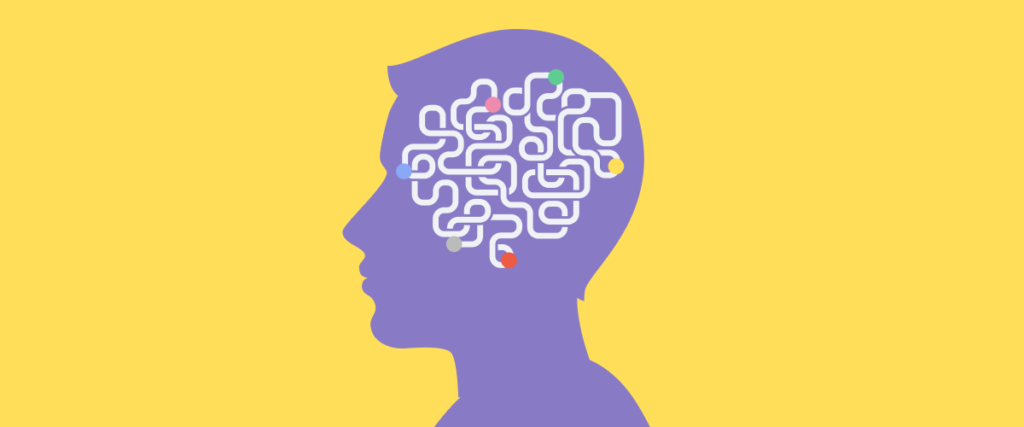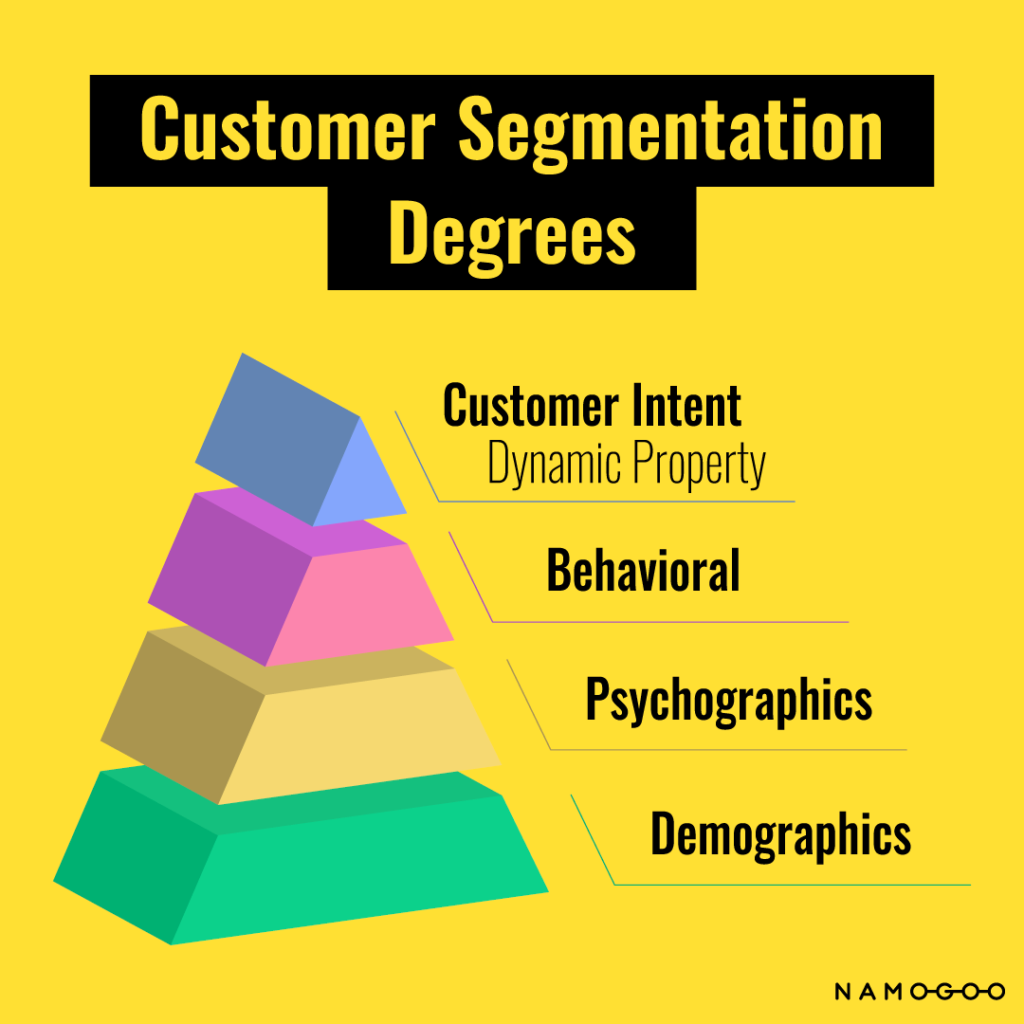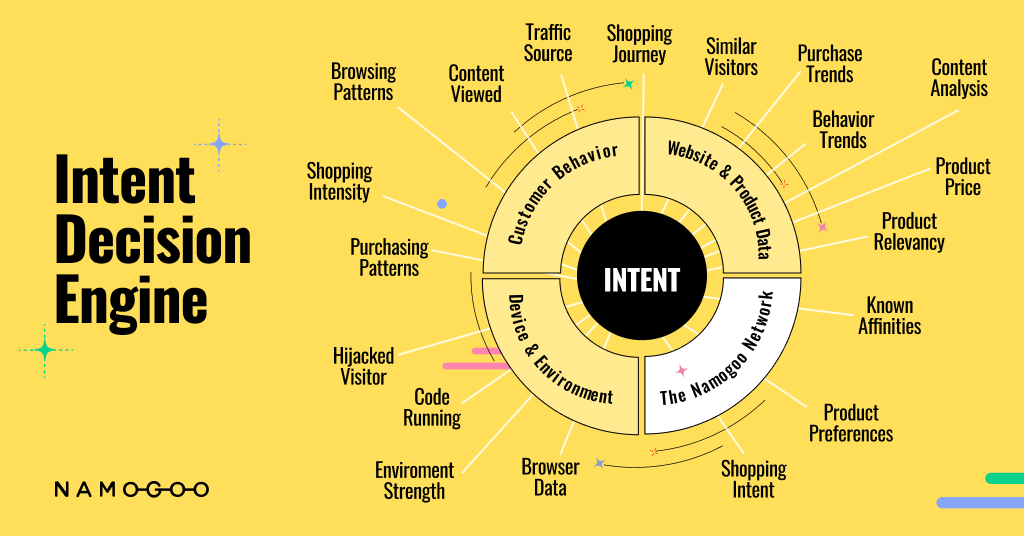Understanding customer purchase intention — and how to measure and use it — is one of the most powerful ways to influence online consumer behavior.
If your eCommerce store is converting poorly, one of the following things is happening:
- You’re bringing in the wrong customers
- You’re bringing in the right customers with low intent to purchase (and they need to be nurtured).
Your team works hard to establish productive customer acquisition channels.
You build buyer personas and customer segments, develop targeted marketing campaigns to expand your reach to those groups, refine your sales promotion strategy, are constantly A/B testing and optimizing the conversion funnel…
But without understanding customer purchase intention, your efforts will fall flat.
Identifying each site visitor’s intent to purchase and tailoring their onsite customer experience based on that information is the key to eCommerce profitability and growth in 2021 and beyond.
What is Customer Purchase Intention?
Purchase intention, also called customer or buyer’ intent, is a measure of each shopper’s propensity to buy a product or service. It is:
“The Sum total of cognitive, affective and behavioral towards adoption, purchase, and use of the product, services, ideas or certain behaviors[*].”
The concept is simple, but in practice, it’s not as black and white as it sounds. Intent cannot be chalked up to a yes or no answer to the question of whether somebody intends to buy a product.
In this guide, you’ll learn the types of consumer intent online, why this concept is so powerful to eCommerce growth, and how to measure, make sense, and take action upon it.
4 Types of Customer Purchase Intention & How They Fit Into the Marketing Funnel
There are different types of intent online, and each visitor lands on your site with a different goal in mind.
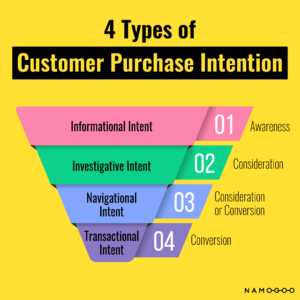
Here we will explore the properties of each of the 4 distinct types of intent & how they fit into the marketing funnel.
Informational intent
This intent type captures consumers in the information-gathering stage. They’re searching for a specific answer or educating themselves on a certain topic.
For example, those searching for skincare routines for sensitive skin will fall into this category. They may find an article like this one on Paula’s Choice to understand how to solve their problem:
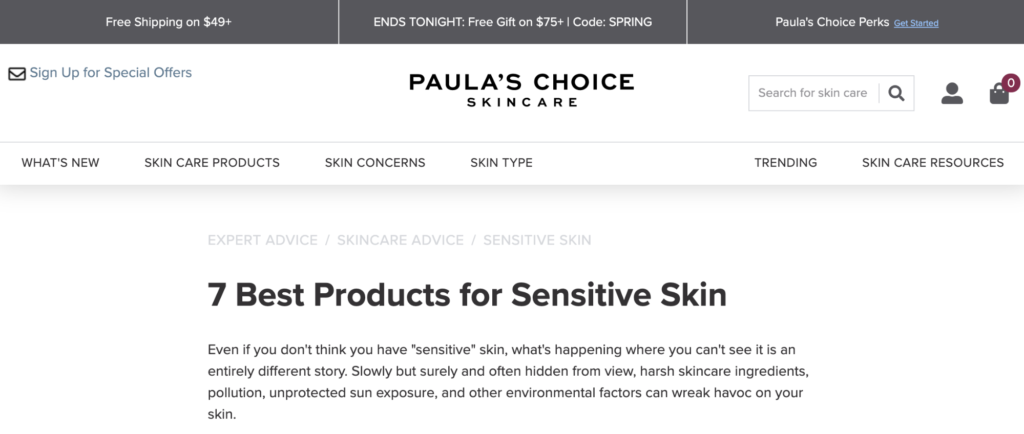
Engage these customers with educational resources through your content and email marketing strategy.
Customer journey stage: Awareness
Goal: Brand awareness
How to treat them: Educate them, provide resources to move them down the funnel. Don’t provide them with discounts and promotions yet.
Investigative intent
Customers with this type of intent are in the research stage. They’re not quite ready to purchase a product but are currently exploring their options through comparison shopping, researching their options, reading product and brand reviews, and social listening.
Because of the massive amount of options available to online consumers, an increasing amount of time is spent in this intent stage across all industries and product types.
Google Trends suggests that queries for “best [product]” have been steadily rising and show no signs of stopping.
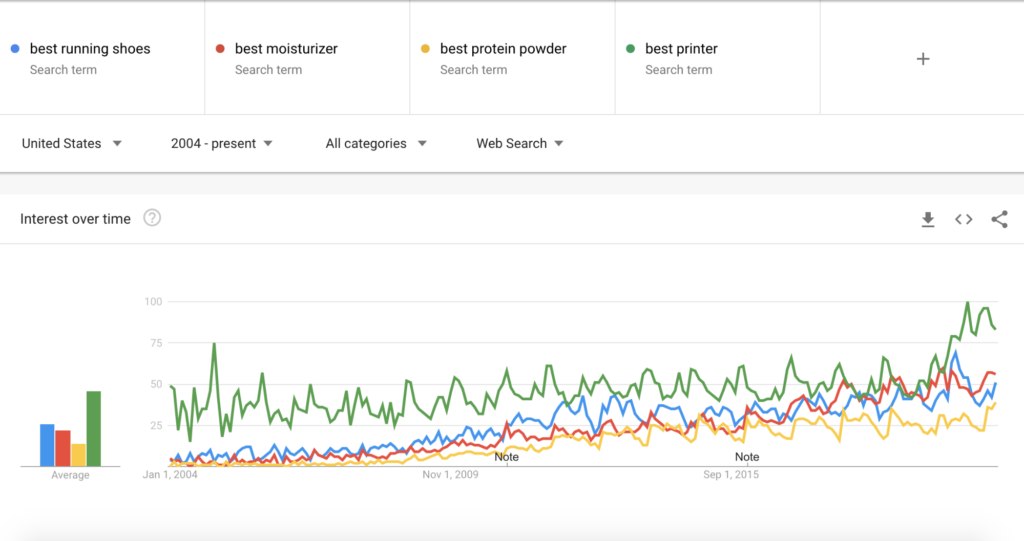
Most of the touchpoints along the customer journey fall within this middle category, and your job here is to convince the online shopper that your brand and products are right for them.
Namogoo customer The Ordinary does this well with a Regime Builder for their skincare products:
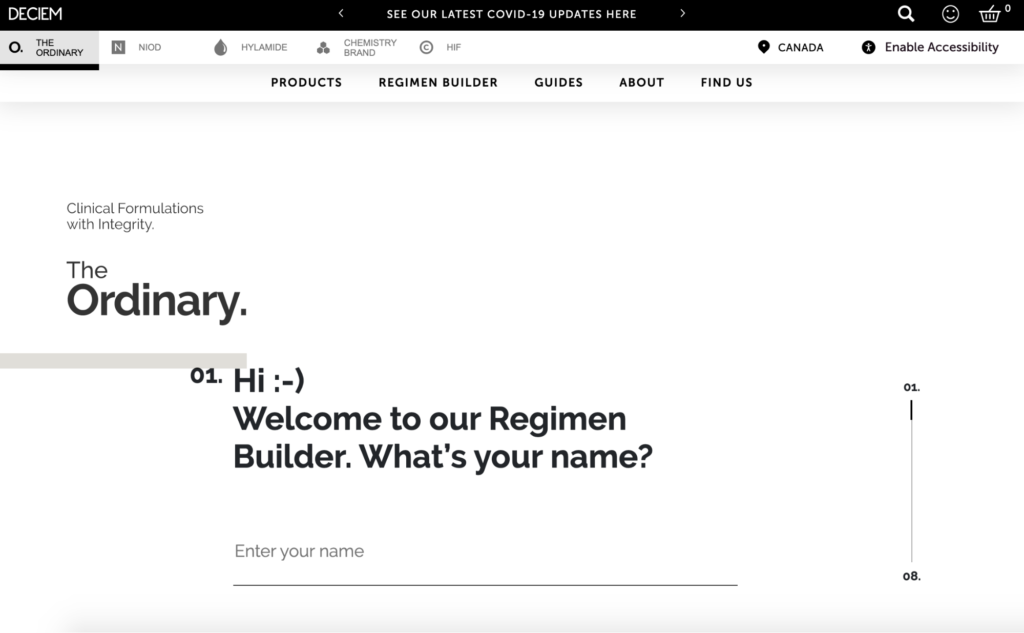 glasses Personalizing product recommendations and education to engage their visitors based on their unique properties.
glasses Personalizing product recommendations and education to engage their visitors based on their unique properties.
Customer journey stage: Consideration
Goal: Gather information for retargeting (paid) or remarketing (email)
How to treat them: Show them value propositions relevant to them, personalize your product recommendations, and educate them on what sets your brand apart.
Navigational intent
Those who are interested in visiting a specific website or going directly to a brand’s online store will land in this intent category.
For example, if a user searches for GlassesUSA.com, they’re likely looking to land on the Glasses USA website.
This is often a term associated with search user intent, rather than online shopper intent, but those with navigational intent may have a higher intent to purchase — after all, they’re seeking out a specific brand or web property.
These users show up in your analytics under the Direct acquisition channel or will Google a brand’s name and be captured in Organic Search.
Customer journey stage: Consideration or Conversion
Goal: Keep them onsite, make the sale
How to treat them: While the online shoppers that exhibit these intent signals were likely seeking you out specifically, they are still at risk of being stolen away by a competitor if you don’t engage them in the right way, or block competitors from highjacking the customer journey. Provide individualized messaging, customer experience, and promotions to convert them with the offer most enticing to them during that specific session.
Transactional intent
This is the type of intent that most people think of when they consider buyer intention. Transactional intent is those with strong purchase propensity, who have “high intent to buy”, and are interested in purchasing a specific product or service.
There are varying degrees of transactional intent, but customers within this intent type are closer to the conversion stage of the customer journey.
With the customers at this stage, making the sale is the name of the game, and to do so, you’ll want to provide them with the individualized promotion or incentive that they’re most likely to take action on.
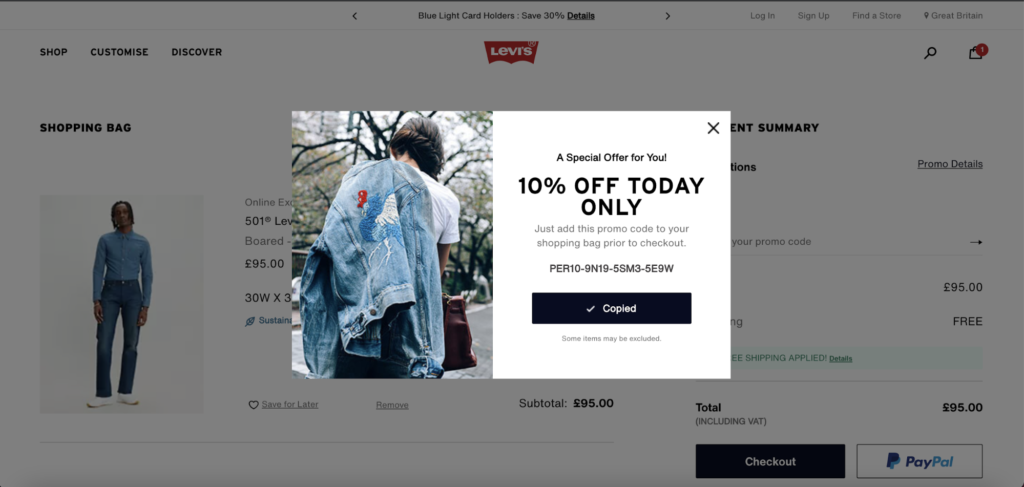
Customer journey stage: Conversion
Goal: Make the sale
How to treat them: Provide individualized messaging, customer experience, and promotions to convert them with the offer most enticing to them during that specific session.
Why Customer Intent Matters
Customer purchase intention is the single most important customer variable to measure and take action against in eCommerce.
But most eCommerce teams create buyer personas, build customer segments around those personas, and think their job is done. If you stop at segmentation, your team will never realize it’s full potential, because you’ll be unable to get as individualized as consumers need to convert.
Google cites that “marketers who try to reach their audience solely on demographics risk missing more than 70% of potential mobile shoppers”[*].
Google uses the example that 40% of those who purchase baby-related products live in households without the babies they’re purchasing for. Think grandparents, baby shower attendees, my friend that spends an ungodly amount of money on decking out my kids with matching outfits.
To neglect customer intent is to neglect the vast majority of your would-be customers. Measuring and taking action on customer intent can help you:
- Improve conversion rates, average order value and revenue per visitor.
- Increase margins
- Protect brand equity and perception
- Improve profitability and marketing channel ROI
- Drive customer lifetime value and retention,
- Personalize the customer experience.
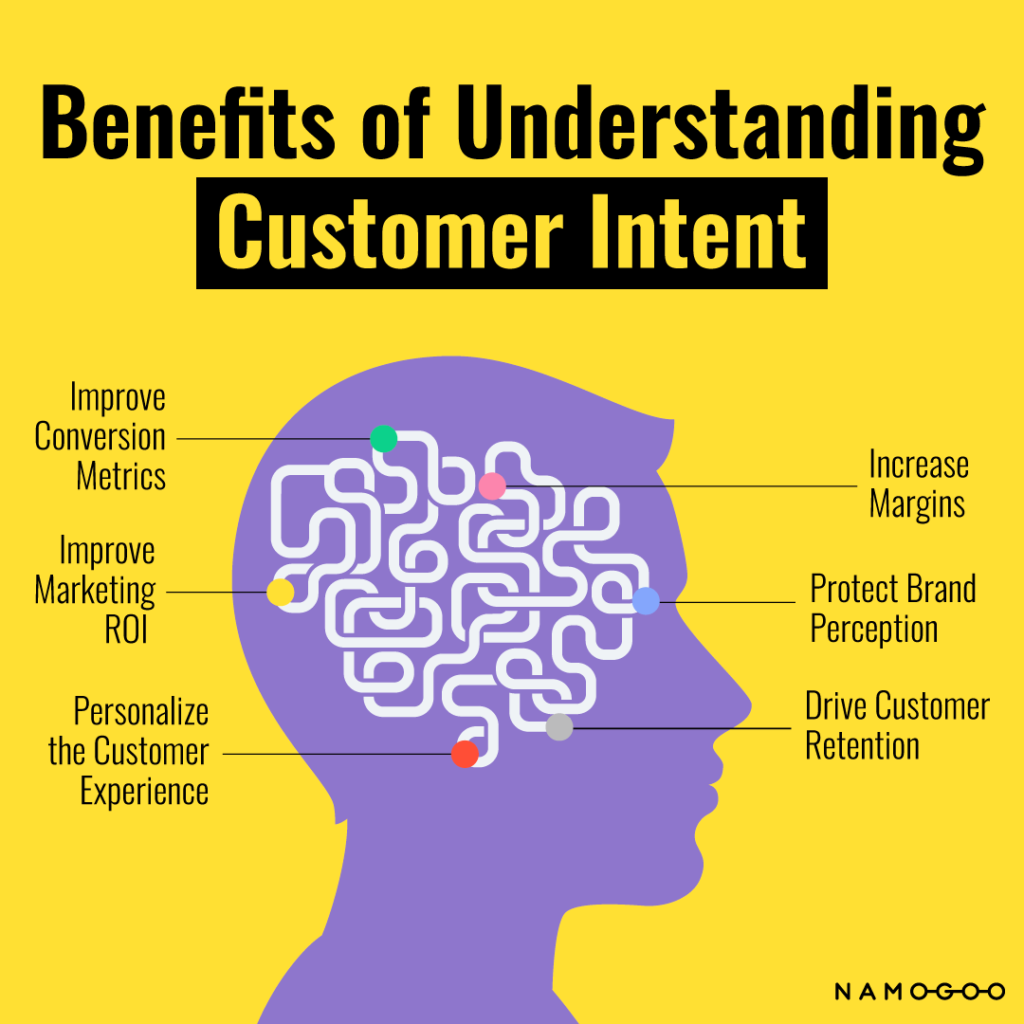
To understand how intent helps drive these benefits, let’s consider the following example.
Within each segment of your customers, there are dozens (if not hundreds) of possible sub-segments — right down to individual, single-customer segments based on their customer demographic, psychographic, and behavioral data.
For example, let’s say that Abby and I are both:
- 32-year-old women living in the same city in Canada (demographics)
- Runners training for the same half marathon (psychographics)
- We are both first-time visitors to ASICS’ website from the same Facebook ad campaign (behavioral)
- In the consideration stage of the customer journey (behavioral).
The Facebook ad targeting was clearly successful in driving both of us to ASICS’s eCommerce store. But consider what happens when we differ in purchase intention:
- My customer purchase intent is high, and my behavioral analytics suggests that I’m not that price-sensitive
- Abby’s purchase intention is somewhere between informational and transactional (falling near “medium” on a scale) and her behavioral data suggests she is more price sensitive.
Then ASICS would be leaving valuable revenue and brand equity on the table by giving me the same onsite promotion as they presented to Abby.
I might have converted with no discount at all, and Abby may have needed a welcome offer of 15%.
This is just one example of a scenario that happens across hundreds of thousands, if not millions of sessions on your online store. Every single visitor that lands on your site, no matter their customer segment, has individual behaviors and triggers.
If you treat them all the same based on their customer segment without considering intent, you’ll leave conversions, margin, brand equity, and customer lifetime value on the table.
How Customer Intent Fits into The Customer Segmentation Puzzle
How to Measure & Make Sense of Customer Intent
Before we explore how to measure customer intent, first we must understand a couple of things about intent.
- Purchase intention is not a static customer property, so it therefore cannot be a customer segmentation model.
Unlike customer segmentation models, intent isn’t a property that remains the same for any sustained time period, so it’s impossible to segment based on intent.
Consider the following B2C customer segmentation strategies:
- Demographics: you either are or you aren’t in a specific age group
- Psychographics: your customers either do or do not have a specific fear or goal
- Behavioral: she either did or did not click on this ad or abandon her cart on this site.
Where these things are identifiable and slow to change (sometimes never changing), customer intent is a scale that is constantly sliding. It can change minute by minute even in the same session depending on your onsite conversion funnel.
- Customer intent is not always a conscious willingness to purchase. Purchase intention can be measured from both implicit and explicit data.
-
- Explicit intent: The willingness to buy a product expressed either through high certainty behaviors such as adding an item to the cart or through information provided by the consumer.
- Implicit intent: intent that is implied via a complicated web of behavioral data and predictive analytics.
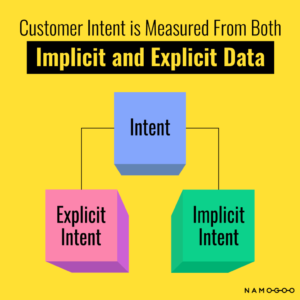
Manual Intent Monitoring
Now that you’re clear on the two points above, you will suspect that measuring and grouping customer intent manually is impossible and misses the point.
Market research firms attempt to measure the intent of consumers through purchase intention scale surveys.
There are two models of a purchase intention scale:
-
-
- Likert scale: A 5-point linear scale with varying degrees of intent, where 5 is “Definitely would use product” and 1 is “Definitely wouldn’t use product”.
- Juster scale: An 11-point scale that assigns each response a number between 1 and 10, to give a more detailed and “accurate” view of how customers identify their intent.
-
The Juster scale is regarded as more accurate than the Likert scale, but research shows that neither is particularly accurate at predicting consumer behavior[*].
That’s because, unlike with customer segmentation, you can’t build out groups of customers based on their intent because customer intent is dynamic, ever-changing, and session-based.
You can certainly make a hypothesis about a group of customers’ intent based on factors like the pages they visit, the channels they come from, and their demographic profile.
But to properly measure and take action on customer intent, you’ll have to employ the powers of artificial intelligence (AI)I.
Customer Intent Monitoring via Artificial Intelligence
Okay, consumer intent isn’t measured through a simple 5- or 11-point survey scale.
Check.
So how can brands measure and monitor customer intent?
The only way to accurately capture the complexity of customer intent is through billions of data points — something that can really only be done by artificial intelligence (AI).
Through the collection and analysis of consumer data, customer intent can be measured and predicted for each individual online shopper during each session, enabling you to take strategic action for each customer.
The best AI accounts for data from both the individual and the aggregate.
For example, Namogoo’s Intent-Based Promotions Intent Decision Engine (also called the “brain”!) analyzes billions of data points to calculate each online shopper’s purchase intention during each session from numerous sources:
1. Individual intent signals
-
-
- Customer behavioral data
- Device
- Environment
- Clickstream data
-
2. Aggregate web data
-
-
- Consumer behavior
- Data from the Namogoo Network (hundreds of the world’s top retailers in every industry)
- Website data
- Product data.
-
Individual Intent Signals
Intent signals are behavioral data points collected from individual sessions that are suggestive of the customer’s intent.
These data points include clickstream and onsite behavioral data like:
-
-
- Time on page
- Acquisition channel
- Viewed content
- Engagement
- Device used
-
They also include data about the device and browser the individual is using and their specific purchasing patterns (timing, price sensitivity, other types of behavioral data).
Consider Google. How well you rank for any given keyword or search term is based largely on whether your site meets the intent signals collected about the searcher.
If a user searches for something and is served your search result for the query, and they end up clicking your result, how they act on the page will signal to Google whether your site is meeting their individual searcher intent.
Aggregate Web Data
Purchase intention is not only measured based on the individual; to get a more comprehensive, better picture of implicit intent to the extent that you can take action on it, aggregate data on groups of customer behavior is taken into account to measure and anticipate intent — not just immediate, but future intent as well.
To understand what I mean, consider Facebook’s Lookalike audiences.
Facebook’s machine learning engines analyze millions of data points about a source audience to build an audience that looks like them — these can be incredibly accurate.
Because human behavior is predictable given enough data, aggregate data from not only the visitors who land on your website, but others across the internet are used to measure online buyer’s intent.
The more data that is fed into the machine, the better the machine becomes at learning and predicting with alarming accuracy the customer’s future behavior.
Namogoo collects and analyzes 2 billion online sessions per week of the world’s top retailers to understand the intent of:
-
-
- Each individual visitor
- During each individual session at your store.
-
It then leverages this data to push each online shopper’s session to its maximum potential.
Realize the Potential of Customer Intent
Measuring purchase intention is pointless if you don’t take action on it.
The secret sauce to leveraging intent data is through individualization of the onsite customer experience based on the purchase intention of each session.
But you don’t have to be Google or Facebook to engage with your customers based on customer intent.
We built Intent-based Promotions to empower eCommerce companies to leverage customer intent through autonomous, AI-driven, personalized onsite promotions.
Using unique and anonymous pre-journey data and in-session behavior to calculate purchase intent, IBP predicts the exact, minimal offer necessary to convert to bring the most value to your business from each session — even if it’s a first-time visitor.
Interested? Let’s show you the power of intent.



